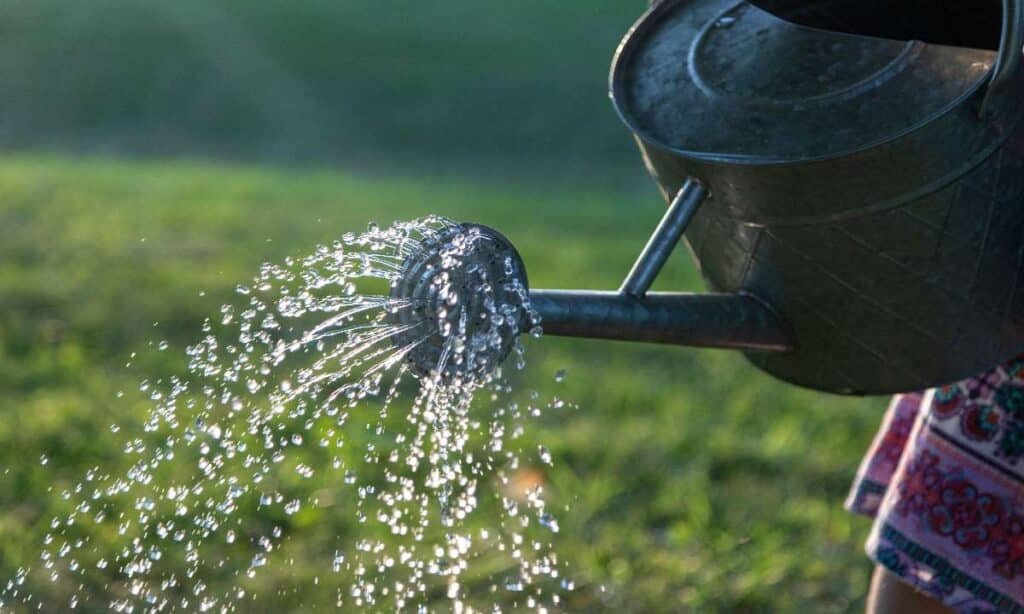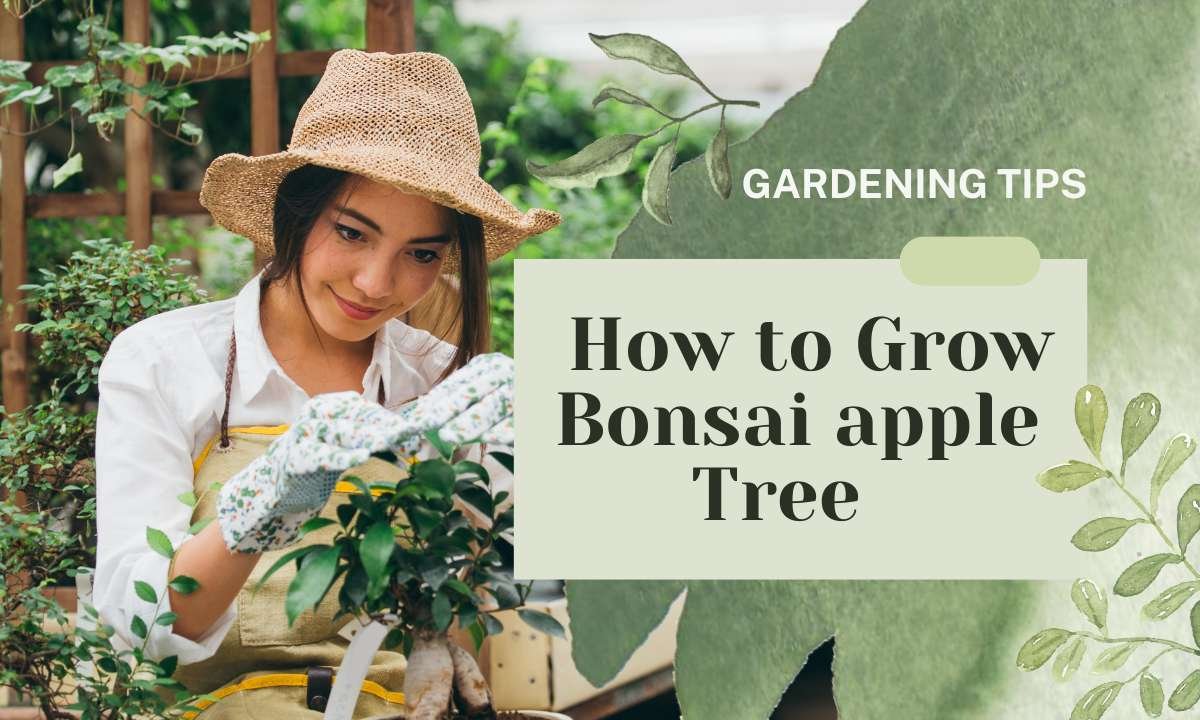Welcome to our in-depth guide on cultivating apple bonsai trees. Apple bonsai trees are a unique and satisfying experience for bonsai fans. These tiny trees add aesthetic appeal to your living space. It will provide the joy of growing your fruits. This article will provide expert insights and step-by-step instructions to help you succeed in your bonsai venture.
Table of Contents
What is Apple Bonsai?
A bonsai tree is a miniature version of a mature tree. It is carefully trained and pruned to maintain its small size even while producing fruits.

Before starting your apple bonsai journey, you should consider several factors, such as the climate in your region, available space for cultivation, and your commitment to regular maintenance. Additionally, understanding the specific requirements of fruiting bonsai trees will set you up for success in the long run.
Selecting the Right Apple Varieties
There are several apple tree varieties that are suitable for bonsai cultivation. Each of them offers unique qualities in terms of size, foliage, and fruit.
1. Dwarf Varieties
There are two types of dwarf apple varieties: ‘Pixie Crunch’ and ‘Urban Apple’. Their compact growth habits make dwarf apple varieties ideal for bonsai cultivation in limited spaces.
2. Miniature Varieties
Miniature apple types such as ‘Pomme Nanuq’ and ‘Miniature Red Delicious’ are well-suited for bonsai enthusiasts seeking tiny specimens.
3. Traditional Varieties
You can train traditional apple cultivars like “Granny Smith” and “Golden Delicious” into stunning bonsai specimens that will add a timeless charm to your collection.
Choosing the appropriate container size
The container plays an essential role in developing your apple bonsai tree. Choose a container that enhances the tree’s visual appeal and provides enough drainage and space for root growth.
Bonsai pots are available in a variety of sizes and shapes, so you can select a pot based on your preferences and design vision.
Soil and Watering

Choosing the right soil mix is the foundation of the success of your apple bonsai journey. Good soil must contain a nutrient-rich mixture of organic matter and inorganic material. It will provide an ideal growing medium for these miniature trees.
It would be best to tailor your watering techniques according to your apple bonsai’s specific needs to maintain consistent moisture levels without over-saturation. Also, regularly monitor soil moisture and adjust watering frequency. It will help to prevent issues such as root rot and dehydration.
Propagation Techniques
Growing bonsai apple trees from seeds
Cultivating apple bonsai trees from seeds may be a rewarding experience. But it requires patience and dedication. Select high-quality apple seeds from a reliable source to encourage healthy growth, then follow specific germination and propagation techniques.
Propagating through cuttings or grafting
Another option for propagating apple bonsai trees is through cuttings or grafting. This method allows you to replicate desirable characteristics from an existing tree onto a new rootstock, ensuring consistency in size, foliage, and fruit quality.
Pruning and shaping
Pruning is essential for maintaining your apple bonsai tree’s desired shape and size. It is a fundamental aspect of bonsai cultivation. Regular pruning helps to promote healthy growth, improve branch structure, and enhance the tree’s overall appearance.
Pruning apples requires finesse; too much at once can harm them, so it’s best done in the winter.
As summer arrives, trees tap into their reserves, engaging in photosynthesis and absorbing nutrients from the soil through their roots.
Come spring, fruit trees burst with new growth fueled by stored energy from the previous year.
Fall sees trees store energy for the dormant winter months and the following spring awakening.
While some pruning here and there is harmless, heavy pruning during any season can hinder growth and fruit production.
You should prune as much as possible during the winter, but random trimming during other seasons may be necessary.
There are several pruning techniques used in bonsai cultivation, each serving a specific purpose in shaping the tree. These include directional pruning to control growth, thinning to improve airflow and light penetration, and wiring to guide branches into desired positions.
Providing the Ideal Growing Conditions
Sunlight and temperature requirements
Apple bonsai trees grow well in sunny locations with at least six hours of direct sunlight daily. They prefer moderate temperatures between 60°F and 75°F and appropriate humidity to support healthy growth. Extreme heat or cold can stress a bonsai tree and reduce fruit production.
Watering and fertilizing guidelines
Consistent watering is essential for the health and vitality of your apple bonsai tree—water thoroughly when the soil surface feels dry. Also, ensure proper drainage to prevent soggy conditions. Fertilize your bonsai regularly during the growing season with a balanced fertilizer to promote robust growth and fruit development.
Controlling Pests and Diseases
Like bigger versions of them, apple bonsai trees are easy targets for various pests and diseases. Some common issues include aphids, spider mites, and fungal infections such as powdery mildew and apple scab. Regular inspection and prompt treatment are essential for preventing widespread damage.
Practice good sanitation and hygiene in your cultivation area to protect your apple bonsai tree from pests and diseases. Remove any fallen leaves or debris that may harbor pests or pathogens, and treat infestations promptly using organic or chemical control methods as needed.
Harvesting
When and how to harvest apples from a bonsai tree
Harvesting apples from your bonsai tree is a rewarding experience that requires careful timing and attention to detail. Please wait until the fruits are fully ripe, indicated by their color and firmness, then gently twist or clip them from the tree to avoid damaging the branches. Enjoy fresh fruits or incorporate them into your favorite recipes for a delicious culinary experience.
Culinary uses for bonsai-grown apples
Bonsai-grown apples offer a unique flavor and freshness that elevate any dish they are used in. Whether eaten raw as a healthy snack, juiced for a refreshing beverage, or baked into pies and desserts, these miniature fruits add a touch of sweetness and charm to every culinary creation.
Growing a fruiting apple bonsai tree is a delightful journey that combines the artistry of bonsai cultivation with the joy of homegrown fruit production. By selecting a suitable variety and providing proper care and maintenance, you can enjoy the beauty of your apple bonsai tree for years to come.
I sincerely trust that this guide has provided you with the essential knowledge to embark on your enchanting journey with these remarkable plants. Happy bonsai gardening!




